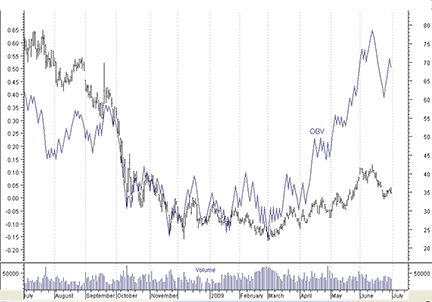INDICATORS
What Are The Insiders Doing?
Modified Volume-Price Trend Indicator
Looking for an edge? Use this indicator to detect what the insiders are doing while they are doing it.
Using only price and volume data, technicians try to discern what the “smart money” is doing in a stock. Several technical analysis indicators are designed for this. Accumulation/distribution (AD) is one such, and in turn, AD is split into two different indicators, interday and intraday. Interday compares the closes and opens of different days, while intraday compares the close of each day to the open of the same day. In this article, we are dealing only with the interday form. In particular, there is one kind of behavior we’re seeking to model.
Here’s the scenario: A major player in a stock wants to buy a large stake or liquidate one. So as not to disrupt the price, the broker builds into (or plays out of) the position slowly. When acquiring a stake, the broker makes many small buys over a few days. Then as the price starts to move up, the broker lays off, allowing the price to drift down. Then the broker buys some more, then lays off again, keeping this up for weeks or months until the desired stake has been acquired. If done well, this can be accomplished during an overall downtrend. Similarly, if the player wants to liquidate a stake, the broker sells, then pauses, then sells and pauses some more until the whole stake is gone. This can happen during an uptrend. Acquiring a position this way is accumulation, while selling it is distribution.
There are many reasons for making such moves. For example, a group may be planning a takeover of a company and needs to build a 5% ownership position in the first part of its campaign. Or a major stakeholder, because of its other business activities, may know the company’s business outlook so well that it’s expecting a negative future for the company and wants out of its stake. These players, of course, don’t want to publicize what they’re doing. But if technicians could detect what they’re doing, while they’re doing it, this would be a strong leading indicator for the stock. And that’s our goal for interday accumulation/distribution analysis.
The on-balance volume indicator
To detect this kind of AD, the cumulative volume indicator was introduced in the mid-1940s. In 1963, Joseph Granville popularized it in his book, Granville’s New Key To Stock Market Profits, renaming it the on-balance volume (Obv).

Figure 1: OBV indicator, overlaid on chart of Ensco Intl. (ESV). Note the volatility of the OBV compared to the stock.